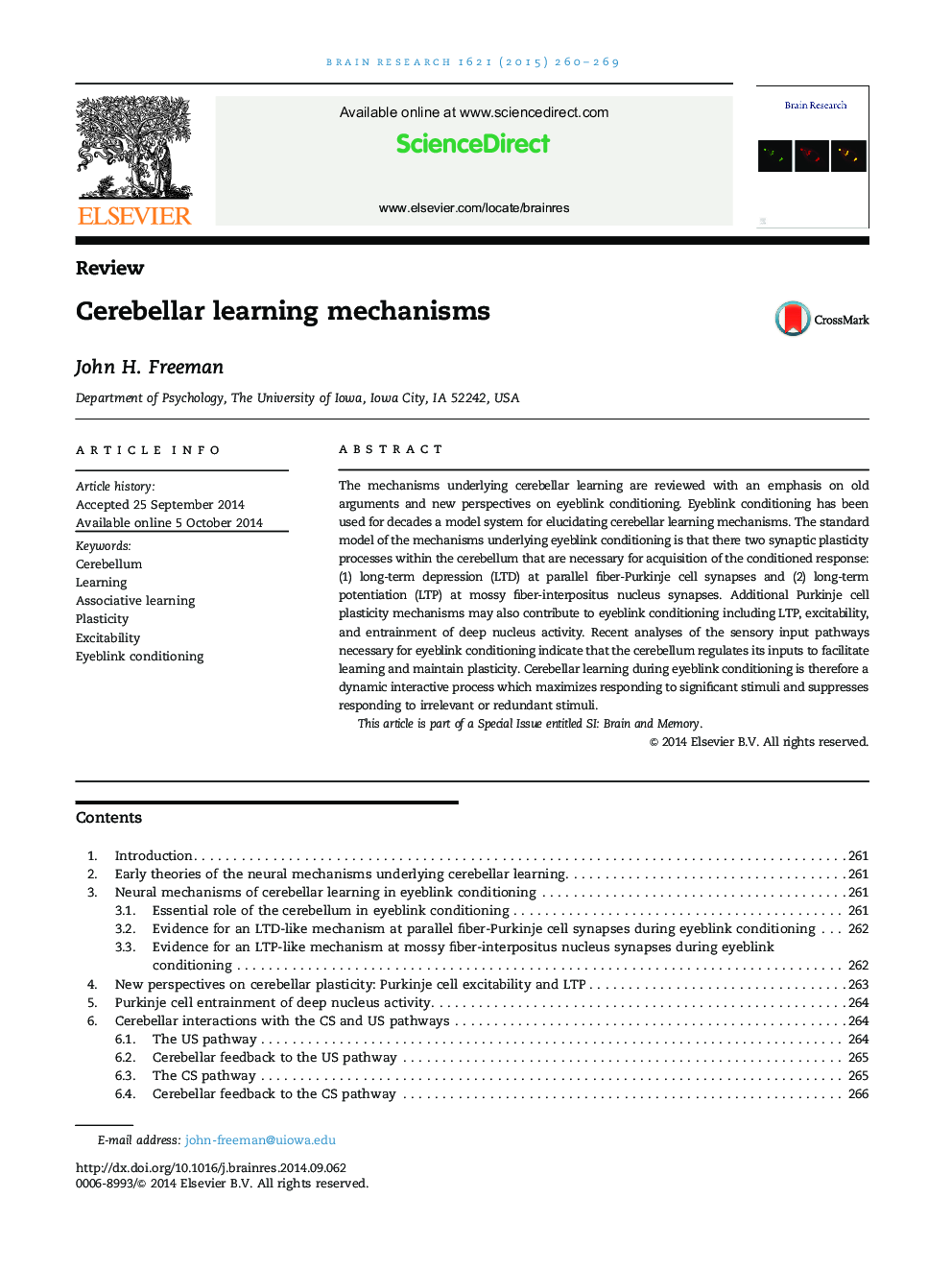| Article ID | Journal | Published Year | Pages | File Type |
|---|---|---|---|---|
| 6262735 | Brain Research | 2015 | 10 Pages |
â¢Eyeblink conditioning is a model system for examining cerebellar learning mechanisms.â¢Eyeblink conditioning is mediated by LTD in parallel fiber-Purkinje cell synapses and LTP in mossy fiber-interpositus nucleus synapses.â¢Purkinje cell LTP and increased excitability may also contribute to eyeblink conditioning.â¢Cerebellar feedback to the CS and US input pathways influences learning and memory.
The mechanisms underlying cerebellar learning are reviewed with an emphasis on old arguments and new perspectives on eyeblink conditioning. Eyeblink conditioning has been used for decades a model system for elucidating cerebellar learning mechanisms. The standard model of the mechanisms underlying eyeblink conditioning is that there two synaptic plasticity processes within the cerebellum that are necessary for acquisition of the conditioned response: (1) long-term depression (LTD) at parallel fiber-Purkinje cell synapses and (2) long-term potentiation (LTP) at mossy fiber-interpositus nucleus synapses. Additional Purkinje cell plasticity mechanisms may also contribute to eyeblink conditioning including LTP, excitability, and entrainment of deep nucleus activity. Recent analyses of the sensory input pathways necessary for eyeblink conditioning indicate that the cerebellum regulates its inputs to facilitate learning and maintain plasticity. Cerebellar learning during eyeblink conditioning is therefore a dynamic interactive process which maximizes responding to significant stimuli and suppresses responding to irrelevant or redundant stimuli.This article is part of a Special Issue entitled SI: Brain and Memory.
